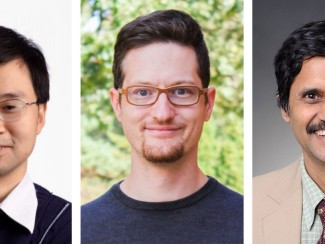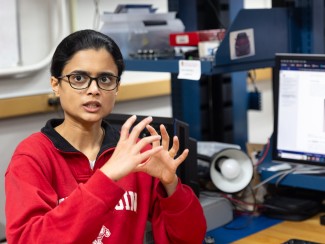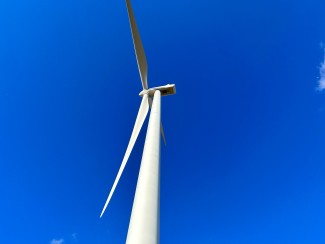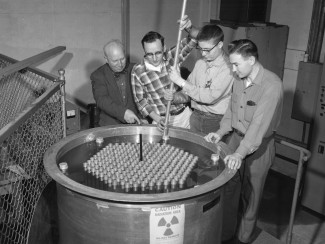
Coiled and unmoving, the “Velvet Viper” is invisible among the native plants in Costa Rica’s rainforests. Aggressive and poisonous, the nation’s most dangerous snake is also nocturnal—a constant danger to villagers without access to electricity.
“The first thing people ask for is a light by the outhouse,” says Ken Walz. “Almost no one has an indoor bathroom. Being able to walk to the outhouse after dark without having to worry about poisonous snakes is important.”
Walz, a chemistry, engineering and renewable energy instructor at Madison Area Technical College (MATC) and adjunct professor at the University of Wisconsin–Madison, is referring to the villagers of Mastatal—a small, rural agricultural community nestled between a mountain range and Costa Rica’s sprawling coastal rainforests adjacent to La Cangreja National Park. Thirty miles of winding dirt roads separate this tiny village from the nearest hospital. The village’s only intersection is more often populated with napping dogs than passing cars. The easiest way not to become a victim of one of the country’s estimated 550 annual snakebites is seeing and avoiding their source.
In 2006, Mastatal was in the midst of a dramatic economic restructuring process after a fungus crippled the local cocoa plantations. Once the backbone of their economy, the village’s ten cocoa plantations were reduced to one.
At the same time back in Madison, Walz and MATC received a grant from the United States Department of Education to begin a program that would create practical study abroad opportunities for students. As part of their initial pitch, MATC would create “Renewable Energy for International Development,” a course that would allow students studying energy to apply their knowledge in an international context.
“Nearly all of Mastatal’s farms went bust as the trees died off,” Walz says. “Today only one farm still operates and they only manage ten-percent of the acreage that they once did.”
Mastatal began looking for new sources of income and began working with Rancho Mastatal, a non-profit organization started by former Peace Corps volunteers. Together they helped designate La Cangreja National Park in Costa Rica, hoping that they could rebuild their economy around eco-tourism.
“By the time our grant was awarded, the La Cangreja National Park had been commissioned,” says Walz. “The catch was that because Mastatal was situated in a predominantly rural area, most of the village relied on firewood as their primary energy source. But, taking wood from a national park was considered technically poaching; they needed new and legal sources of energy.”
Wisconsin Idea in Action
For the past seven years, Walz and his students have been providing the villagers of Mastatal with solutions tailored to their specific needs and resources.
“When you think about rural communities like Mastatal, where the power they have is intermittent or they don’t have any at all, even these tiny, simple energy systems can have a huge impact,” says Calvin Cherry, a graduate student from the College of Engineering at UW–Madison.
For example, cooking stoves that use solar energy instead of wood also eliminate harmful smoke inhalation and work around the limitations on wood supply that resulted from the commissioning of a national park. For the families that can’t afford liquefied petroleum or propane, Walz and his students develop biogas digesters that utilize the methane from a family’s hogs or cows to produce biogas for cooking.
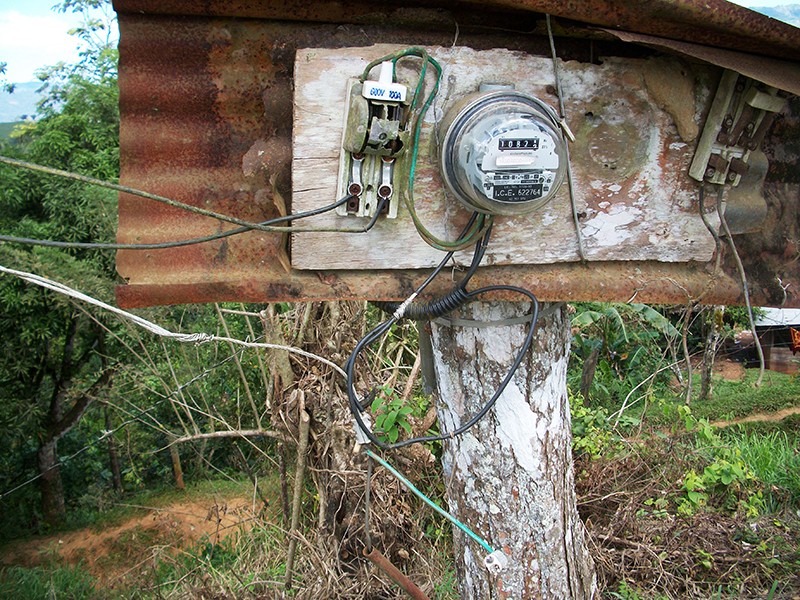
Still, the largest challenge for villagers remains having access to light. A consistent electricity supply allows farmers to continue their work after dark, students to study at night while helping with the family farm during the day, and community members to better avoid the dangers lurking in the surrounding rain forest. But, it’s more than that—access to electricity allows Mastatal the comforts of modern life that are easily taken for granted in the developed world. With materials donated by American companies and Rancho Mastatal, Walz’s students provide stable electricity to power lights, charge cell phones or support an Internet café that an entrepreneurial group of local teenagers assembled from an old PC and dial-up modem
“It’s incredible how amazingly fast all of this change has reached Mastatal,” Walz says. “You’re talking about a village that had limited contact beyond their nearby neighbor villages until recently, and now they are connected to the entire world. In part made possible by student willingness to engage with the local community members to transfer technology and develop these simple systems.”
Cherry was one of many students that helped install solar systems to provide electricity for villagers. “We installed 40-60 watt solar panels that would provide enough power to run a handful of LED lights for a limited time,” Cherry says. “The systems were designed to be tamper proof and included easy–to-read meters that allow villagers to monitor and plan their energy use.”
Designed for simplicity and robustness, each system has a built-in gauge that mimics a traffic light: green indicates plenty of battery charge, yellow notes dwindling charge and red alerts that the battery’s charge is nearly depleted. Cherry believes that in reducing complexity, a system becomes significantly easier to install, troubleshoot, repair and replicate.
Bringing the Idea Home
The impact of tiny energy systems isn’t confined to rural communities in developing countries; the dangerous sting of Wisconsin’s bitter-cold winters replaces the threat of “Velvet Viper” bites. Energized by his work in Costa Rica, Cherry began exploring the intersection of academic research and addressing the social needs of homelessness in the United States. He has designed and begun implementing solar panels and battery storage on micro-homes for some of Madison’s homeless population with the Occupy Madison movement. The systems closely mimic those he helped install in Mastatal.
“I started to develop the system by using many of the same parts and components as we were using in Costa Rica,” Cherry says.
An 80-watt solar panel secured to the homes’ rooftop will charge a sealed lead acid battery. Cherry says this type of battery requires little maintenance by the micro-home occupant. The single battery will carry enough charge to power three LED lights and a cigarette lighter outlet for approximately four to five hours.
I’m elated to be involved in a project that strives to ease the social conundrum of homelessness, but stays close to my academic research.
Calvin Cherry
The University of Wisconsin–Madison, as part of ongoing electrical systems research, will donate the first photovoltaic system. Researchers and students will monitor the energy production and consumption to help improve the system’s overall efficiency and stability.
“I’m elated to be involved in a project that strives to ease the social conundrum of homelessness, but stays close to my academic research,” Cherry says. “I can work to advance the energy efficiency field, while helping better the standard of living in the local community.”
Walz’s study-abroad program has helped train teachers and students like Cherry who have taken their experience and created more than 20 new study abroad programs across the United States. For his part, Walz was not surprised by the effect the trip had on Cherry.
“Its very interesting to me to watch the process of students taking part in a study abroad program. They go down to Costa Rica as engineering students. When they get there they realize that they already have the skills to profoundly improve someone else’s quality of life,” Walz says. “They leave as students, but they come back as engineers.”

